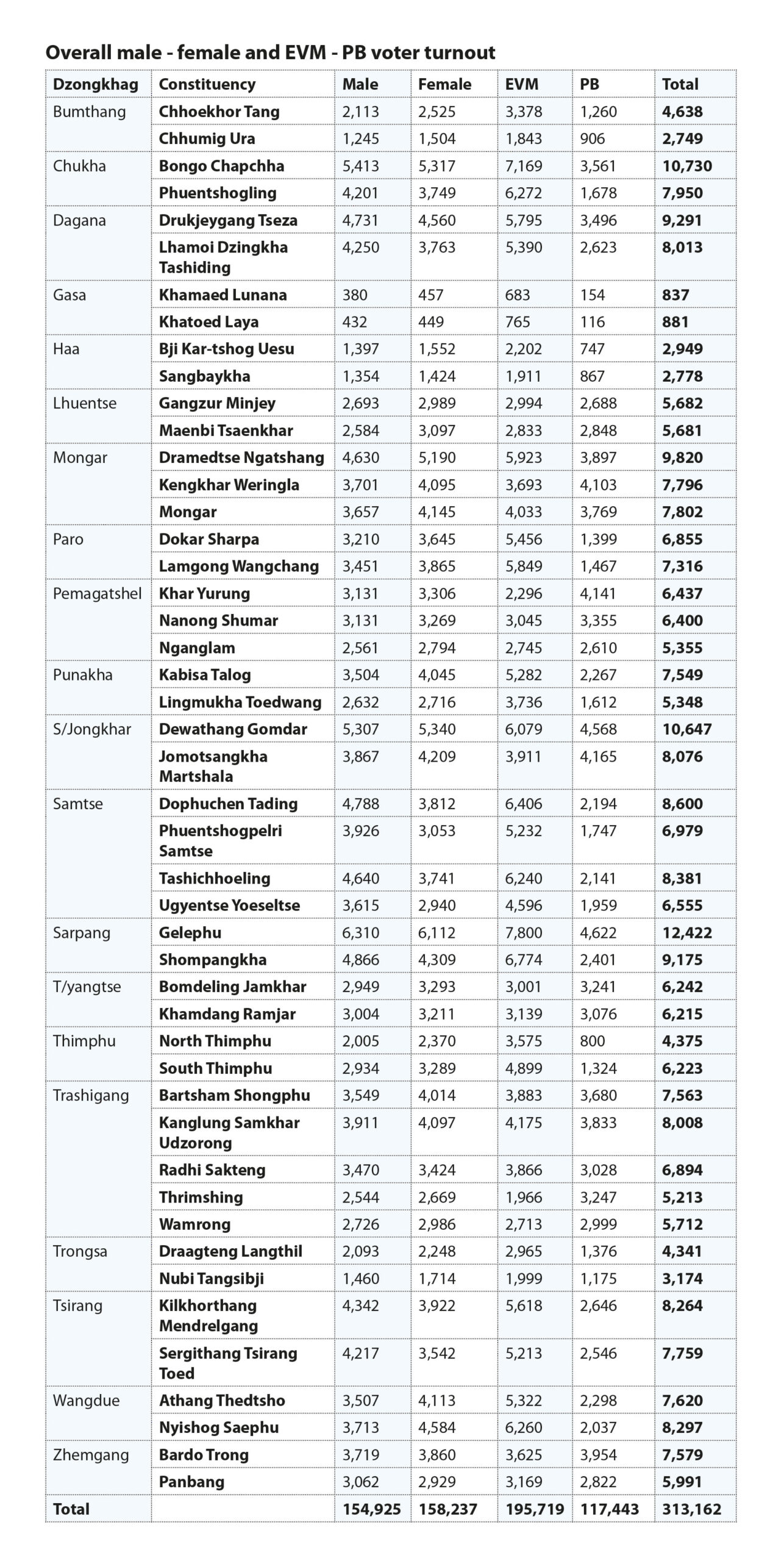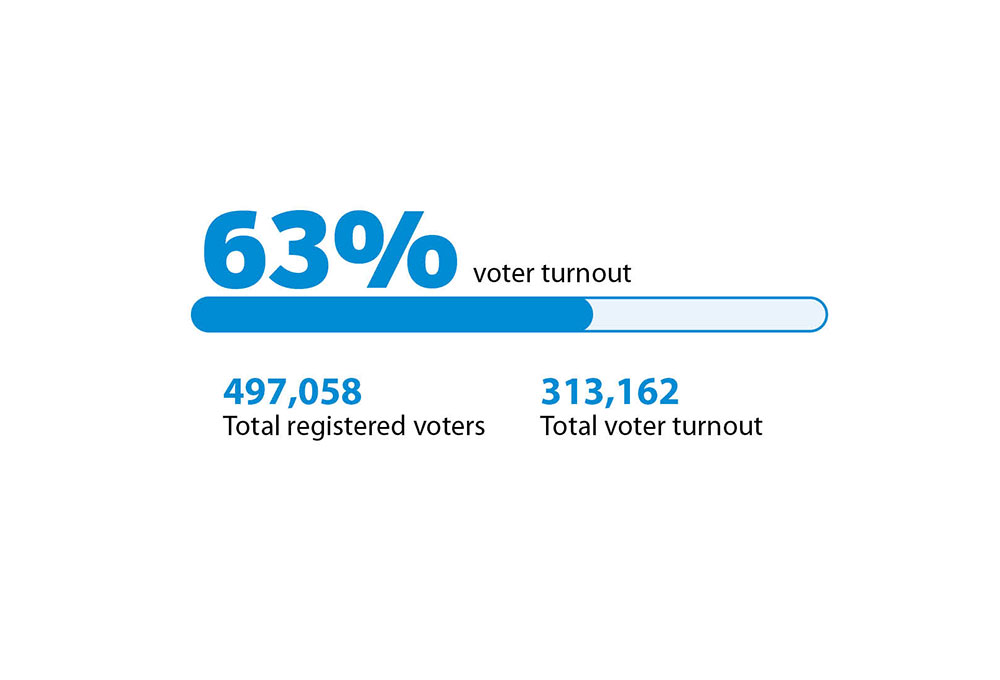Dechen Dolkar
The primary round of the fourth National Assembly (NA) Elections for 2023-24 witnessed a decline in overall voter turnout, showing a three percent decrease compared to the primary round of the third NA elections.
Despite the Election Commission of Bhutan (ECB) extending postal ballot services to employees of critical service providers in the private sector, including Druk Holding and Investment (DHI) Companies and some State-Owned Enterprises (SOEs), the primary election saw a dip in voter participation.
However, it is noteworthy that the number of registered eligible voters has increased by 58,395 over the last five years.
The overall voter turnout for the primary round of the fourth NA elections stands at 63 percent. Out of the total 497,058 eligible registered voters, 313,162 exercised their voting rights.
Among these votes, 195,719 were cast on the Electronic Voting Machines (EVMs) at 809 polling stations, while 117,443 votes were cast through postal ballots, both in-country and overseas, including special early voting by the 125,949 registered postal voters.
Breaking down the voter demographics, of the 313,162 voters, 154,925 are male, and 158,237 are female voters. Interestingly, despite a higher number of registered female voters, male voter turnout remains higher.
Gelephu constituency has the highest number of registered voters at 20,314, with 12,422 voters casting their votes.
Meanwhile, the Khatoed-Laya constituency achieved the highest voter turnout, reaching 78.31 percent among its total 1,125 registered voters.
Comparing this with the 2018 primary round NA elections, where the overall voter turnout was 66.36 percent of the 438,663 registered voters, the decrease is evident.
This drop is attributed to the absence of facilitation booth postal ballots and special needs postal ballots, which were provided during the third NA elections.
In the third NA elections, the ECB facilitated 65 postal ballot facilitation booths and 18 mobile booths across 20 dzongkhags for all eligible voters, reducing the need to travel to their respective constituencies to vote.
For fourth NA elections postal services were extended to those working in the tourism sector, employees, and dependents of DHI companies, private school teachers, trainees in private institutions, and de-ssups.
Despite these efforts, eligible voters who did not receive postal ballot facilities had to travel to their constituencies for voting. Unfortunately, a substantial portion of voters faced challenges in participating in the voting process due to logistical constraints.
In the third NA elections, a total of 133,795 voters registered for postal ballots, with 108,580 voters utilizing the postal system.
In the 2018 general round of elections, the voter turnout was 71.46 percent, with 113,920 voters casting their votes through facilitation booths or the conventional postal ballot system.
Reflecting on historical trends, the 2013 primary elections had an overall voter turnout of 55.27 percent, with 17.98 percent from postal voters. In the general round elections of the same year, the overall voter turnout increased to 66.13 percent, with 17.52 percent from postal voters.



